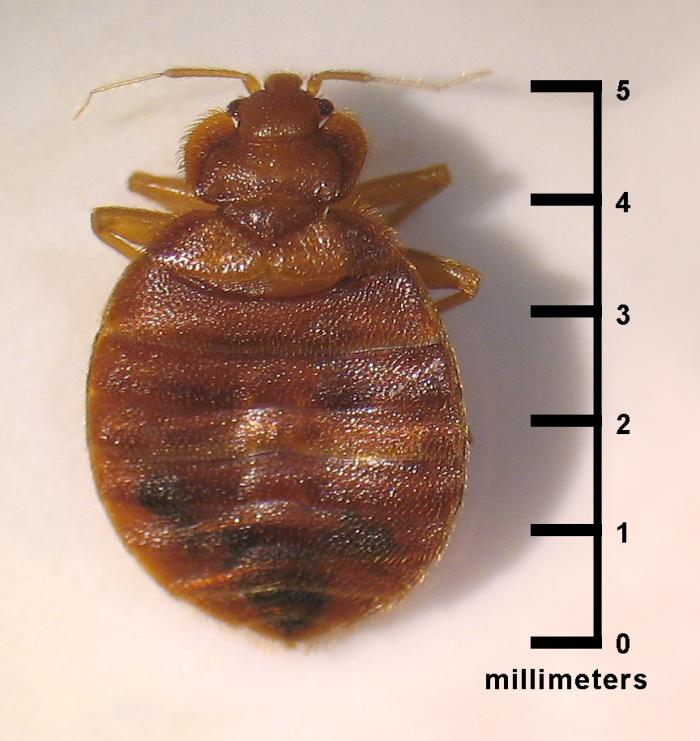


Don’t let bed bugs hitch a ride on your next trip. These small insects love to travel and can easily move across rooms, cities, and countries.
Bed bugs are small oval brown insects in the Cimicidae family (Cimex lectularius is the common bed bug). They don’t fly, but area very quick and can squeeze easily into cracks and crevices. Both male and female bugs bite at night by feeding on human blood. Most bed bugs only live up to 6 months, but some can live for years and can survive for months without feeding. A female bed bug will lay between 5 and 12 eggs daily, reaching up to 500 eggs within her lifetime.
Bed bugs gravitate towards areas where people and animals live because they are attracted to carbon dioxide, which is produced through breathing, and their favourite food: blood. While feeding, the bed bug injects saliva that causes skin irritation and inflammation. Scratching the bite area causes a rash that can progress to swelling and red welts on your arms, legs, face, and chest area.
At present, there is no evidence that bed bugs transmit infectious diseases. Researchers have found bed bugs can carry bacteria called Methicillin-resistant Staphylococcus aureus (MRSA), which is highly resistant to antibiotics and can cause infection in people with compromised or weak immune systems.
Since bed bugs are nocturnal, you most likely won’t see them. However, their eggs and feces betray them. Look for clusters of feces (black/brownish dots) and eggs (whitish, the size of a pinhead, in clusters of 10 to 50).

An adult bed bug has a brownish pear shaped body and typically measures ¼ inch or 1.9cm long – about the size of an apple seed. What is fascinating is that its body can change dramatically: before feeding a bed bug can be as thin as paper, but after feeding it becomes bloated.
Individual responses to bed bug bites can vary. In some people, bites can cause no reaction or they may be easily misdiagnosed. For others, bites may cause an obvious reaction that includes red, itchy welts on exposed skin. In fact, many people don’t realize they have a bed bug infestation until after they notice bites.
If you do have bites, try not to scratch and keep the skin clean to prevent infection. Calamine lotion helps relieve the itchiness. You can also talk to your doctor or pharmacist about getting the right antihistamines to reduce hives.
Before your trip
During travel
When you return
If you suspect that you brought back bed bugs with you, contact a pest control company for a consultation. They will have tips on how to get rid of them and suggest a treatment schedule. There are a variety of options (but also a lot of misinformation) on both toxic and non-toxic extermination methods. Talk to a professional or a person who has successfully stopped bed bug infestations at home. Resources exist – the key is to be consistent and thorough.
Last reviewed and updated: December 11, 2020.
Photo by CDC/ CDC-DPDx; Blaine Mathison (Public Health Image Library ID 12704)